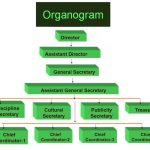It is a challenging task when it comes to taking clear, organized, and understandable notes during lectures in school or events. It goes beyond writing correct words or joining sentences and beyond being a good grammarian.
Effective note-taking for a student involves some critical steps and criteria to have the perfect note.
This article discusses note-taking, the differences between note-taking and note-making, and how to develop a clear and well-organized note.
Table of Contents
What is Note-taking?
Before going to the nitty gritty of note-taking, you need to get acquainted with what note-taking is all about.
Note-taking is simply a way of briefly recording important information so that you can recall it later. It is one of the most crucial skills required of every literate today.
It is sharper than the sharpest human memory and helps keep relevant ideas that would have run out of memory.
It also helps in improving your memory and in emphasizing and organizing information. Not only that, note-taking helps you eliminate distractions by keeping you as a person focused during lectures.
Methods of Note-taking
The various methods of note-taking vary based on their classification and characteristics. And whichever form of note-taking you choose depends on your writing style or the speaker’s mode of speaking.
Here, no specific style is recommended for use, but the ability to fit into any of these methods influences your choice of writing.
There are various note-taking methods, but the following are the basics among all other methods.
-
List method
This involves short phrases or paragraphs describing ideas in detail. It is usually a sequential listing of ideas as they are presented and requires lots of writing.
This is one of the most common note-taking methods; most students use it when they haven’t learned other methods.
-
Concept maps
This kind of method provides a graphical representation of information and ideas. It takes more effort than other note-taking methods, and its format helps quickly track the lecture.
This is because it requires little thinking and involves writing the main topic into the center of your document and connecting it with the sub-topic and related branches. Concept maps are helpful for students who learn better visually.
Read also: How to write a term paper for yourself or other students.
-
Outlines method
This is also a basic form of note-taking used by students in colleges. This highly structural method deals with placing the most information or ideas along the left margin, with more specific facts placed in spaces to the right.
This method doesn’t necessarily require markings or numbering when placing the main ideas because the space relationship will also indicate the major and minor parts.
The disadvantage of this form of note-taking is that it requires adequate thoughts or practical attention skills for accurate writing and organization.
-
Cornell method
Developed by Professor Walter Park at Cornell University, it is a helpful study tool for capturing notes with defining priorities. It is mainly known for its flexibility and uses boxes to allocate information and ideas.
These boxes contain the header, a small box at the top of the page, and two columns that take up most of the page and capture almost all notes taken before having the footer box underneath the page and used for summary.
A critical advantage of the Cornell method is its organization.
Differences Between Note-taking and Note-making
There are many differences, as well as similarities, between note-taking and note-making.
The similarities between them are that both aid understanding of studies and demand active listening skills.
Aside from these similarities, some characteristics make them distinguished and unique from each other, notable among these characteristics are;
-
Manner of writing
Note-taking is a direct and live copy of what is being said and is usually written in the speaker’s words, while note-making does not necessarily need a direct source and can be written in the writer’s words.
-
Speed
Since note-taking is a live copy of a presentation, its speed is usually faster when writing than note-making, which can be written in a convenient space and time.
-
Quality of content
Since the content of note-taking is from the speaker’s speech, there may be forgotten information and ideas, unlike note-making, which can be done through thorough research hence having a higher quality.
-
Purpose
Note-taking is needed for recording keywords of information, while note-making is needed for reviewing, combining, and synthesizing ideas.
Since note-taking is the focus of this article, let’s discuss how to take effective notes during lectures as students.
Read also: Guidelines for writing an effective cold email to a professor.
How to Take Notes During a Lecture
As mentioned earlier, note-taking is a crucial skill every literate person needs today. But we’d be focusing more on students in this post, and even if you’re not a student, this is also for you.
There are many rules to writing good notes in class, but we will narrow it down to only the basics.
Foremost among all other guidelines are;
-
Listen attentively
Note-taking isn’t about writing down the entire lecture; it is about picking the main ideas when writing.
Writing main ideas involves paying rapt attention, and until this step is taken, you may never get it right in your note-taking activity.
-
Write down only key points
Refrain from overwriting; only the highlights and summary of the lectures are needed. Writing extensively means you’re making notes and not taking notes.
-
-
Organization
-
Ensure your work is organized for easy comprehension when going through it after the lectures; disorganized work makes understanding the notes difficult.
-
Ask questions
Be bold enough to ask questions during lectures. It’s a fact that the most frequent questionnaires in lectures tend to have the best notes during lectures.
Comparing notes is also a significant way to have a quality write-up.
Read also: A Simple Guide to Getting Reasonable Placement as a Nigerian Student.
Before concluding this article, there are practical tips to further aid your taking notes during lectures or while studying.
If these tips are not put to use, you may have bulky notes. They include;
Other Practical Tips For Writing an Effective Note
1. Use paper with a margin or make your margins if you don’t have one.
2. Write your headings/titles at a strategic position with capital letter.
3. Start new concepts with a paragraph.
4. Include examples relating to each concept for a more precise understanding.
5. Use the margins to write out those meaningful things that you’ve forgotten or don’t necessarily fit into any of the paragraphs.
6. Use abbreviations to save time, and always remember what your abbreviation stands for.
7. Use diagrams to aid your understanding of the note taken.
8. Finally, re-read your notes and summarize your work below the notes.
Are you a writer, and do you want your write-ups published? If yes, join the Insight Writers community.
Conclusion
Effective note-taking isn’t a day’s work; it involves continuous practice before you can become a pro at it.
When you finally get it and begin using it, you can be assured that all the essential information you put down will be available and understandable whenever needed.
We hope this was helpful to you. Subscribe to our newsletter to receive notifications of our latest posts right in your inbox.
About Author
- An SEO Content writer with dedicated 4 years experience. I have expertise in typically researching for topics, creating style guides for a company's content, and writing content that helps drive conversions based on the organization's goals.
Latest entries

 CareerFebruary 1, 2024Creating a Company Organogram/Organizational Chart: All You Need to Know
CareerFebruary 1, 2024Creating a Company Organogram/Organizational Chart: All You Need to Know CampusNovember 19, 2023Tuition-Free Universities in Germany: Relocating to Germany Through Study Route
CampusNovember 19, 2023Tuition-Free Universities in Germany: Relocating to Germany Through Study Route Business InsightsSeptember 15, 2023Top 20 Easy-to-Sell Courses on Expertnaire
Business InsightsSeptember 15, 2023Top 20 Easy-to-Sell Courses on Expertnaire

